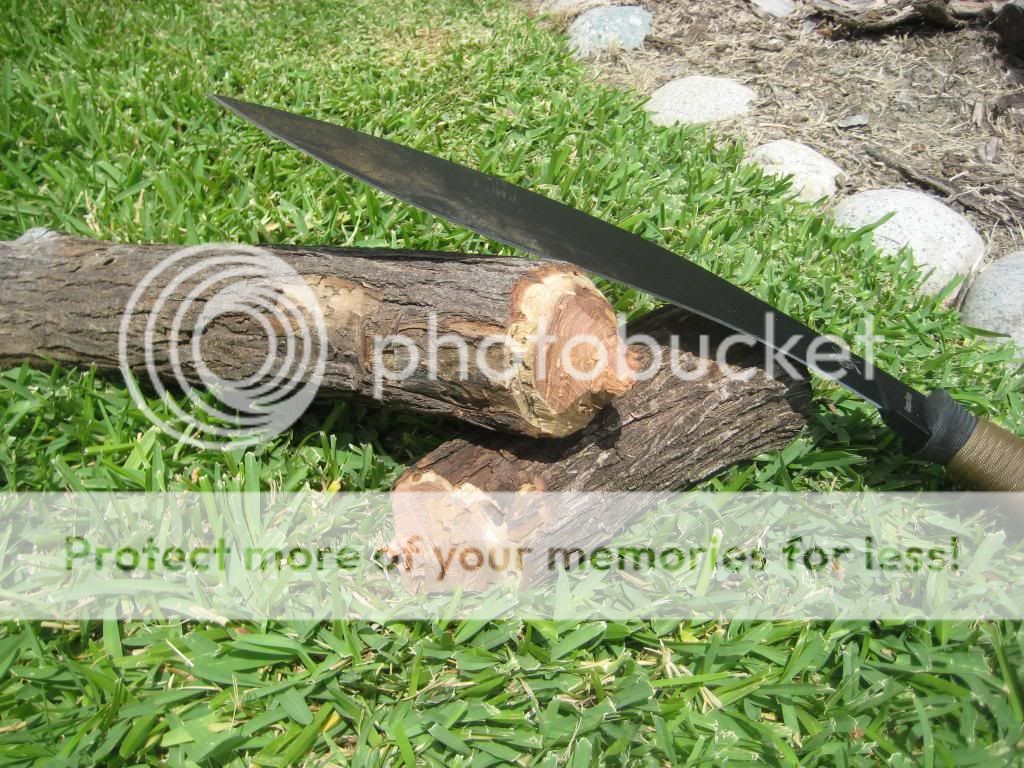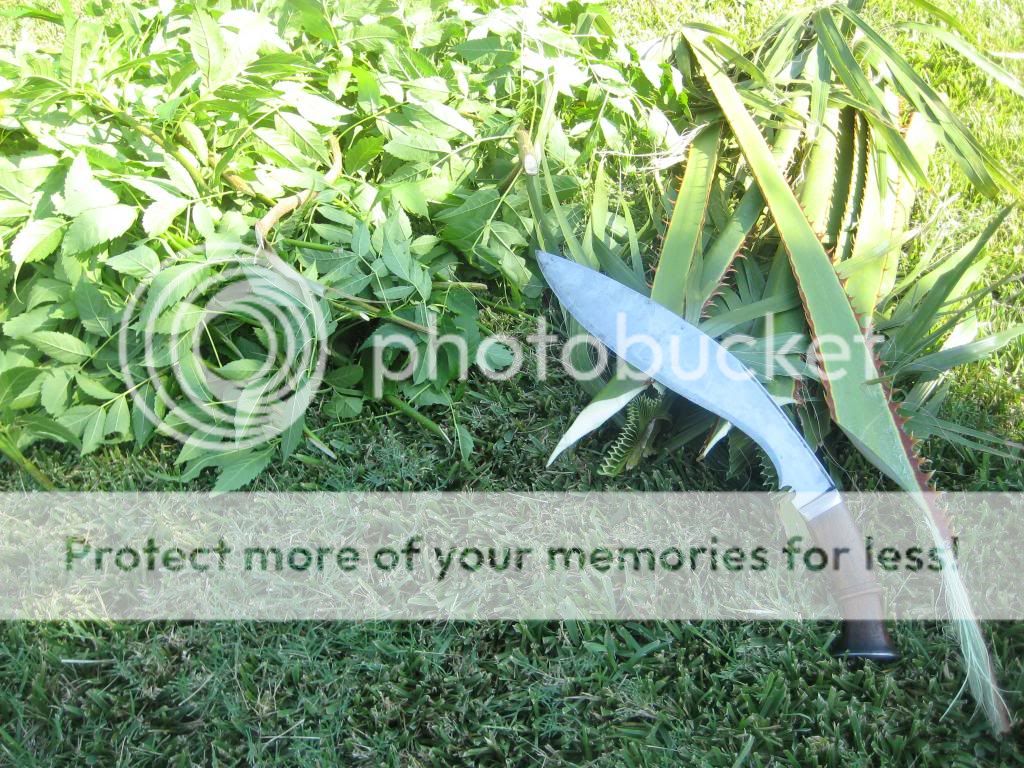EChoil, I hadn't really considered a bolo type machete. I pretty much went with the kukri style based solely on its reputation. After a little digging around I do kind of like the kabar Parangatang. Is there a specific reason why you'd recommend a machete over a kukri for a first long blade?
Yes. A machete will prove to be a much more 'general' use blade and is good around the house too for things like grasses, certain light chopping requirements, etc. For all-round use, home or camping, I think most people should probably own a machete, or even a bolo before a kukri.
For camping and wilderness trips I use a bolo more than my machete as I'm usually in pretty harsh stuff when I'm out. Spring/summer is a bit easier so that's usually machete time (dealing with more grasses and weeds; plentiful woodfall with no snow cover). A bolo is better in ice/snowfield situations, and places where there is little fallen wood, than a machete. A bolo is a bit tougher and weightier too--a better chopper on the tough stuff when you DO have to take on the trees instead of being able to pick up woodfall. Similar criteria as where a leuku really shines over, say, a KaBar-type blade, on a smaller scale.
In your case though, clampdaddy, you should get a kukri. It sounds like you like them and want one. Don't let technicalities keep you from owning a knife you WANT. From reading what you've written you won't be disappointed. They're damn good tools and would probably fullfill the needs you state for your camping very well.
Only other thing I'd recommend would be an alternate, 'working' sheath as opposed to the wood framed goatskin "ceremonial" sheath and auxiliary blades your kukri may come with, especially if you buy a traditional. The stock sheath is a bit of a pain in the butt for camping or wilderness carry. I'd look into a nice light, flexible nylon or canvas sheath for trips and real use (I"m not big on Kydex for larger blades. It's hampering). Then store it in the original sheath once back home. There are some good second sheaths out there.
All of this is primarily subtleties--the differences, uses, etc. I have four basic blade tools beyond the usual 'knives' for outdoor use: bolos, a rigger's hatchet, a kukri and machetes. While each can be referred to as a specialized tool in some regards, all will substitute well for the other for your purpose of general camping.
Pick a good kukri and you'll be glad you did. Most of those mentioned here are good ones. I know I really prize mine.







